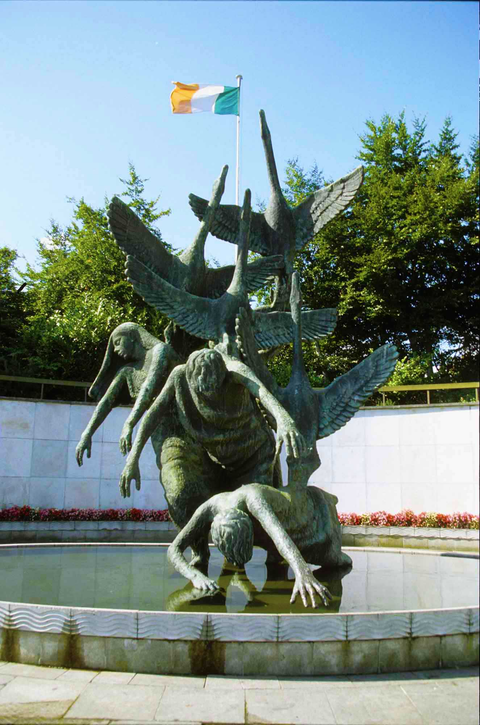Garden of Remembrance
Many cities around the world have memorials honouring those who lost their lives in their own country’s struggle for independence from an outside power. Dublin is no different except in the unusual yet striking treatment of the subject. The Garden of Remembrance, situated off Parnell Square, was opened in 1966 on the 50th anniversary of the Easter Rising, a seminal uprising during Easter Week 1916, which, although a military failure at the time, eventually led to Ireland’s independence from Great Britain in 1922. President Éamon de Valera, who performed the opening ceremony, was himself a rebel commander in 1916.
The site chosen was once part of the pleasure gardens of the nearby Rotunda Lying-in Hospital, perhaps the oldest maternity hospital in the world, first founded in 1745. The gardens themselves provided the historic setting for the inauguration in 1913 of the Irish Volunteers, the organisation that provided most of the fighting rebels in the 1916 revolution. It was very appropriate then that the memorial to all the Irish who died fighting for Irish freedom should be erected at this location. The site at the northern end of the former gardens was purchased in 1939 but further work was delayed due to the outbreak of the Second World War. In 1946, the City Architect, Daithi P Hanly, designed the layout but further delays meant the opening didn’t happen until twenty years later
The main central theme is a sunken cruciform-shaped pool of still water. All along the tiled floor of the pool are representations in mosaic of ancient weapons such as spears and shields. Several of the spear shafts are broken. The symbolism here represents the Celtic tradition following a battle victory or when a peace between enemies was brokered of throwing a selection of weapons into the nearest river.
The railings dividing the raised grassed areas carry motifs of the Irish harp and the bronze war trumpets of Ireland’s Heroic Age (around 500BC).
The most outstanding feature of the garden is the enormous bronze statue group on the stepped area at the far end to the entrance. Added in 1971, the sculpture, designed by Oisin Kelly, is called the Children of Lir and was cast at the Marinelli Foundry in Florence. It is intended to show that people and nations are often changed utterly by significant events in their history. It is based on an Irish mythological story of the four children of King Lir being changed into swans by their jealous and wicked stepmother. Condemned to wander the earth for 900 years the four hapless siblings were only restored to human form when they supposedly met St Patrick but promptly expired on the spot because of their unimaginable age. Most unfair!
Engraved onto a section of the screen wall behind the statue group are the words of a poem, We Saw a Vision by Liam Mac Uinsen, part of which goes as follows: In the Winter of Bondage we saw a vision….Winter became summer. Bondage became freedom and this we left you as your inheritance. O generations of freedom remember us, the generations of the vision.
In 2011, Queen Elizabeth ll laid a wreath in the Garden of Remembrance during her state visit. It was seen by most people as a great act of final and total reconciliation between two neighbouring nations where the dominion of one over the other for hundreds of years led to so much violence, tragedy and bitterness.
The garden is lined with flower containers and benches for people to take their ease and perhaps reflect on the meaning of the park, but, as you might expect, the visitors are often just local office workers taking their break in peaceful surroundings or sunning themselves under Dublin’s elusive celestial orb.
Under the caring management of the Office of Public Works, the Garden of Remembrance is usuallyopen to the public from 0830 to 1800 April to September and from 0930 to 1600 October to March.





